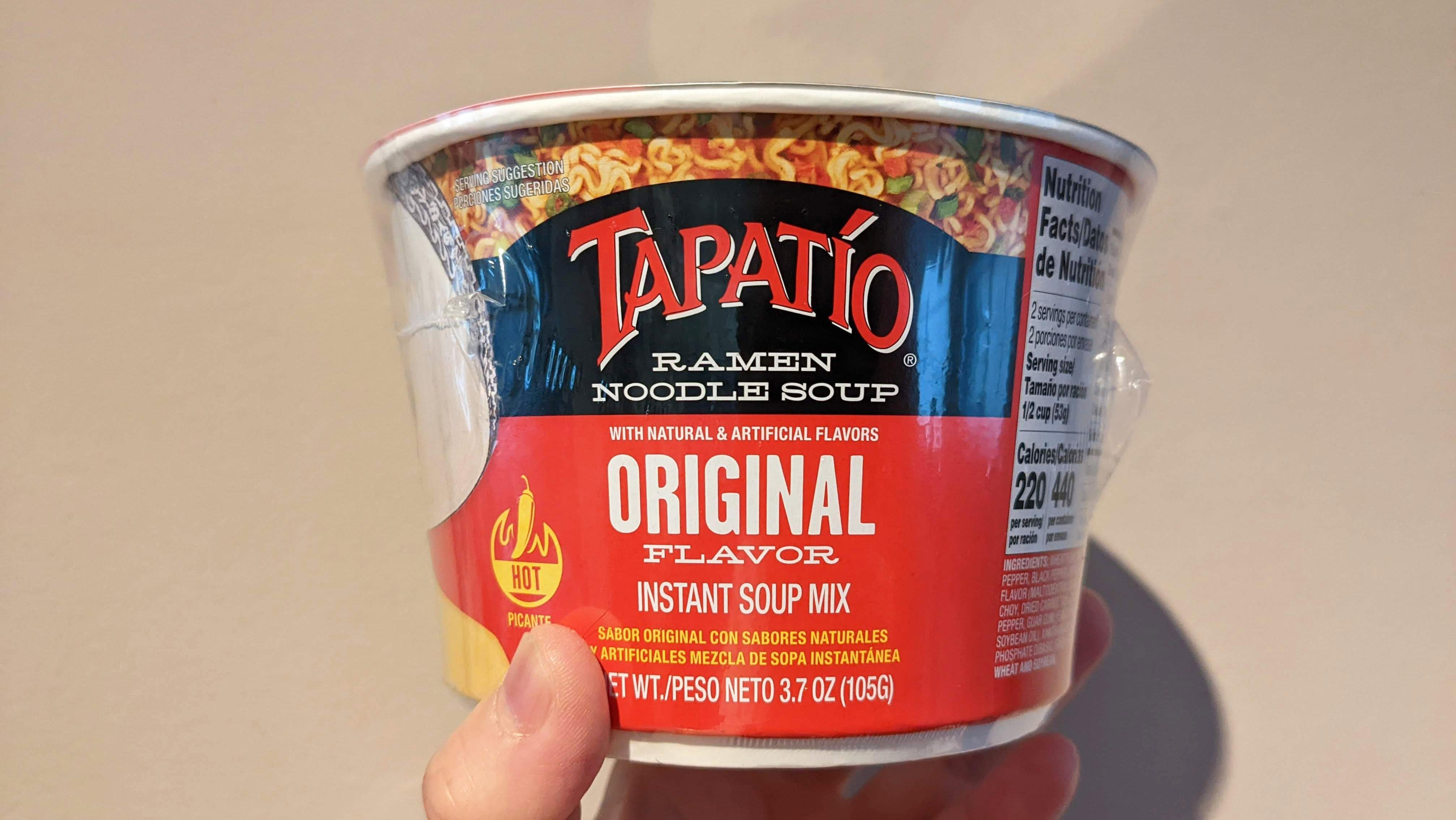The Secret Behind Tapatío Ramen's Genius
This noodle soup is the best kind of collision between two worlds.
It was sometime last year that I noticed a curious package of cup noodles pop up in my local grocery store. The store I go to focuses heavily on Mexican food, which caters to the majority of my neighborhood. The package is black and red, and it features a mascot of a man in a sombrero, the same man who graces the bottle of Tapatío hot sauce beloved by so many, including yours truly. That's right, this was Tapatío cup ramen.
How does Tapatío cup ramen taste?
I slipped a package of it in my shopping basket, and a few days later, I broke into it for lunch. It's just like any other cup ramen, where you empty the spice packet onto some noodles, heat up some water, and let the whole thing sit for three minutes until everything is finished hydrating. I tore the lid all the way off and dug in. The noodles are what you'd expect, thin, a little chewy (I've noticed noodles in cup ramen never seem to cook well), but what I was most surprised about was the broth.
The Tapatío soup base was tart, spicy, and 100% reminiscent of hot sauce, but with the same MSG-laden savory flavor of instant ramen. That is to say, it was marvelous. Ever since then, I've been bringing a few cups home here and there, and when the craving hits (which it does, and hard), I sit down to a piping hot meal of noodles. It's a genius mashup, and I am so glad my curiosity got a hold of me that day.
A brief history of Tapatío cup ramen
At one point, I closely examined the package to try and suss out the origin of these noodles, and I was absolutely delighted to find out that they had come from a surprising place: South Korea. They're distributed by a U.S.-based company called Unity Food, and I did a little research to find out just how and when these noodles came about. I learned that these new-to-me noodles have been around since 2018, per a press release from back then.
It turns out that two women were the driving force behind bringing these noodles to a wide market. One was Dolores McCoy, the daughter of Tapatío founder Jose-Luis Saavedra Sr, and the other was Carol Choi, a businesswoman who founded a company called United Exchange Corp that licensed and sold the product. Both businesses are based in Los Angeles, and the two families had come together to partner on its inception.
In the press release, Choi said:
We realized an opportunity in the food market after witnessing the trend of consumers adding hot sauce to their instant ramen cups. So we decided to join forces, combining the Saavedra family's legendary hot sauce background, with the Choi family's inherent ramen expertise. Per capita, South Koreans consume the most ramen noodles in the world.
The Korean-Mexican fusion cuisine phenomenon – which can certainly be attributed to Roy Choi's launching of his Kogi BBQ truck in Los Angeles, in 2008 – has taken on a life of its own. Tapatío Ramen is an extension of, and direct representation of, the continuing fusion trend. This new product, and the collaboration between these two families, is a nod to that trend's Los Angeles roots.
That's pretty fantastic. Mexican and Korean food share some similar flavor sensibilities, especially when it comes to seasoning with chile peppers. If you co-mingle some of the concepts of the two cuisines, you'll find that they come together particularly well.
What's more is that these Tapatío noodles have even evolved into a joyful marriage of birria and ramen, which I've seen sold in my neighborhood at a popular taco shop called Tacotlan. In case you've never had the stew (typically made of beef or goat), birria is a true joy, and is reminiscent of Korean stews, or jjigaes, in a spiritual way. Shops will use birria to cook off the ramen noodles, and some will incorporate the spice packet or leave it up to your discretion as to whether or not to use it. (It's a lot of additional salt and birria is already salted.)
No matter what, I highly encourage you to go try a cup of Tapatío ramen if you see it on a grocery store shelf. There's varieties like Extra Spicy, Chicken, Shrimp, and Beef, too, in case you want to branch out. I'm telling you, it's the ramen you never knew you needed.
